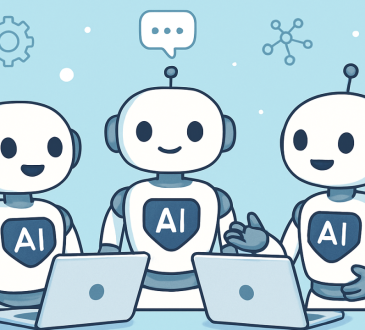Choosing the Best Model Size and Dataset Size Under a Fixed Budget for LLMs

In the fast-paced world of Artificial Intelligence, developing large language models (LLMs) isn’t just about technical brilliance — it’s about managing costs wisely. Training these massive models is as much a financial challenge as it is an engineering one.
Decisions like how big the model should be, how much data it needs, and how to allocate limited resources can make or break a project. When budgets are fixed, finding the right balance between model size and dataset size becomes both a science and an art.
And here’s the surprising truth — bigger isn’t always better. A huge model with too little data can overfit and fail to generalize, while a smaller model with excessive data may not learn efficiently. The key lies in balancing capacity, data, and cost to achieve the best possible performance without overspending.
The Budget Constraint: A Reality Check
Every organization, from startups to research labs, faces some form of budget limitation — whether it’s compute resources, cloud costs, or training time.
Training expenses typically scale along three major dimensions:
- Model Size (Parameters): The number of parameters determines the model’s learning capacity. But as models grow from billions to trillions of parameters, compute and memory demands skyrocket.
- Dataset Size (Tokens): Larger datasets can improve generalization and reasoning, but the benefits flatten out beyond a certain point.
- Compute Efficiency: Hardware choices, parallelization strategies, and training algorithms can either stretch or drain a given budget.
In simple terms, training cost ≈ parameters × tokens.
So, if your budget is fixed, increasing one factor means cutting back on the other.
This leads to the golden question:
Should you train a larger model on less data or a smaller model on more data?
Understanding the Trade-Off
To solve this, we turn to scaling laws — mathematical relationships showing how LLM performance changes with more compute, data, and parameters.
Here’s what decades of AI research (from OpenAI, DeepMind, and others) tell us:
- Bigger models perform better — but only if trained on enough data.
- More data helps — but only if the model can handle it.
- Beyond a point, returns diminish — throwing more compute or data at the model doesn’t help much.
Under a fixed compute or monetary budget, it’s not about maximizing one dimension — it’s about staying close to the scaling-optimal frontier, where every dollar yields equal performance improvement.
Imagine a curve:
- On one end, the model is undertrained (too large, not enough data).
- On the other, it’s underparameterized (too small, too much data).
- The sweet spot? Right in the middle — where both model size and data are used efficiently.
Practical Guidelines for Balancing Model and Dataset Size
1. Estimate Your Compute Budget Early
Before diving into architecture or data collection, define your total compute capacity — hardware, power, and time. This helps set realistic expectations and avoids overspending.
2. Use Scaling Laws as a Compass
Empirical scaling laws from leading research show that, under a fixed compute budget, model size should grow roughly as a power law relative to dataset size. This provides a roadmap for cost-effective model development.
3. Avoid the “Too Big to Train” Trap
Trying to build a GPT-4-scale model without the right resources can waste time and money. Instead, aim for a balanced, trainable model — say, in the 3B–13B parameter range — that fits your compute and data budget.
4. Prioritize Data Quality Over Quantity
A smaller, high-quality dataset often outperforms massive, noisy ones.
Focus on:
- Cleaning and deduplicating data
- Curating diverse and representative samples
- Filtering low-value content
This ensures efficient learning and better generalization.
5. Adopt Efficient Training Techniques
Optimize training through:
- Mixed-precision training (to save compute)
- Gradient checkpointing
- Low-rank adaptation (LoRA) for fine-tuning
- Synthetic data generation to expand diversity affordably
These methods help you train smarter — not just harder.
6. Experiment with Smaller Prototypes
Test smaller-scale versions of your model first. Measure scaling behavior, tune hyperparameters, and identify the optimal data-to-parameter ratio before scaling up.
7. Plan for Fine-Tuning and Continual Learning
Instead of one massive general-purpose model, train a smaller base model and fine-tune it for specific tasks. This is cheaper, faster, and often just as effective.
Continual learning can further cut retraining costs over time.
The Emerging Consensus: Balanced Efficiency
Recent experiments reveal a clear trend:
For a fixed training budget, a moderately sized model trained on a large, high-quality dataset typically achieves the best balance between cost and performance.
For example, a 7-billion-parameter model trained on 1 trillion tokens may outperform a 30-billion-parameter model trained on only 300 billion tokens.
Why? Because the smaller model benefits from richer, more diverse learning experiences.
This insight is shaping the future of AI development. Instead of endlessly increasing parameter counts, researchers are focusing on:
- Smarter data pipelines
- Curriculum learning
- Efficient fine-tuning methods
The new goal isn’t raw scale — it’s efficiency per dollar.
Beyond the Budget: Measuring True Efficiency
A balanced model isn’t just cheaper to train — it’s cheaper to deploy.
Larger models consume more power, memory, and GPU time during inference. Smaller, well-trained models often deliver comparable accuracy at a fraction of the runtime cost.
New efficiency metrics now matter more than ever:
- Loss per dollar
- Accuracy per watt
- Inference cost per query
Organizations are increasingly measuring the Total Cost of Ownership (TCO) — evaluating not just accuracy but the cost of maintaining and deploying the model in production.
Looking Ahead: Smarter Scaling for Smarter AI
The future of AI isn’t about who builds the biggest model — it’s about who builds the smartest model within constraints.
Techniques like:
- Mixture-of-Experts (MoE)
- Retrieval-Augmented Generation (RAG)
- Modular fine-tuning
are redefining what efficiency means. These methods make models adaptive, cost-effective, and easier to maintain.
Ultimately, choosing the right model and dataset size is more than a technical challenge — it’s a strategic decision. It reflects how deeply an organization understands scaling dynamics, optimization, and responsible AI development.
As compute costs rise and sustainability becomes a top concern, success will belong to those who can do more with less — achieving world-class results through balance, precision, and innovation.
Conclusion
The age of “bigger is better” is fading. The new era of AI focuses on efficient intelligence — finding the perfect equilibrium between model size, dataset size, and budget.
By combining smart scaling analysis, quality data, and modern training strategies, organizations can push the limits of what’s possible — responsibly, sustainably, and intelligently.




